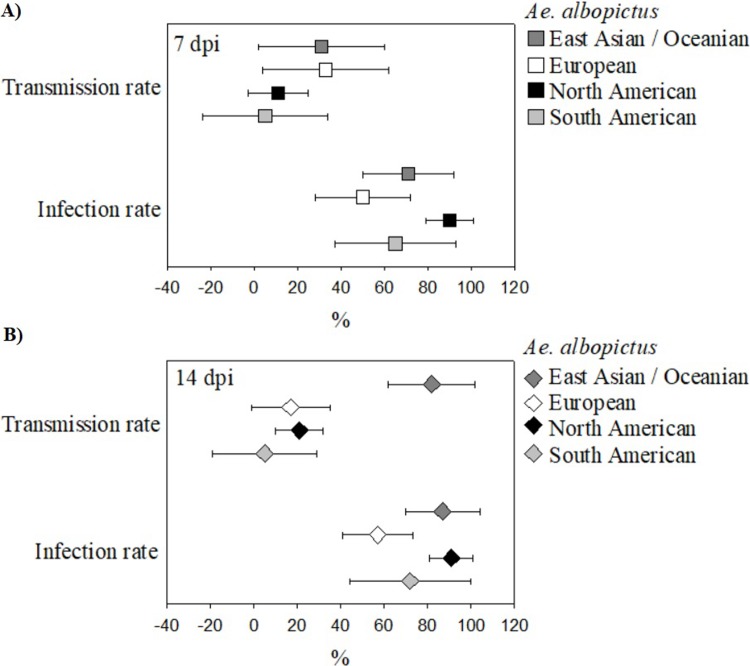Fig 3.
Scatter plot showing mean IR and TR for ZIKV (± 95% CI) of geographically separated populations of Ae. albopictus at 7 (A) and 14 (B) dpi. East Asian/ Oceanic and North American Ae. albopictus demonstrated higher IRs than other Ae. albopictus populations at both 7 dpi (IRs: East Asian/ Oceanic = 0.71, 95% CI = 0.50–0.92; European = 0.50, 95% CI = 0.28–0.72; North American = 0.90, 95% CI = 0.80–1.00; South American = 0.65, 95% CI = 0.37–0.93) and 14 dpi (IRs: East Asian/ Oceanic = 0.87, 95% CI = 0.70–1.04; European = 0.57, 95% CI = 0.41–0.74; North American = 0.91, 95% CI = 0.81–1.01; South American = 0.65, 95% CI = 0.37–0.93) though these results were not statistically significant. East Asian/ Oceanic and European Ae. albopictus showed the highest TRs at 7dpi (TRs: East Asian/ Oceanic = 0.31, 95% CI = 0.01–0.60; European = 0.33, 95% CI = 0.05–0.62; North American = 0.11, 95% CI = -0.03–0.24; South American = 0.05, 95% CI = -0.23–0.34) while East Asian/ Oceanic Ae. albopictus showed significantly higher TRs than other strains at 14dpi (TRs: East Asian/ Oceanic = 0.82, 95% CI = 0.61–1.03; European = 0.17, 95% CI = -0.01–0.35; North American = 0.21, 95% CI = 0.10–0.31; South American = 0.05, 95% CI = -0.19–0.28).

